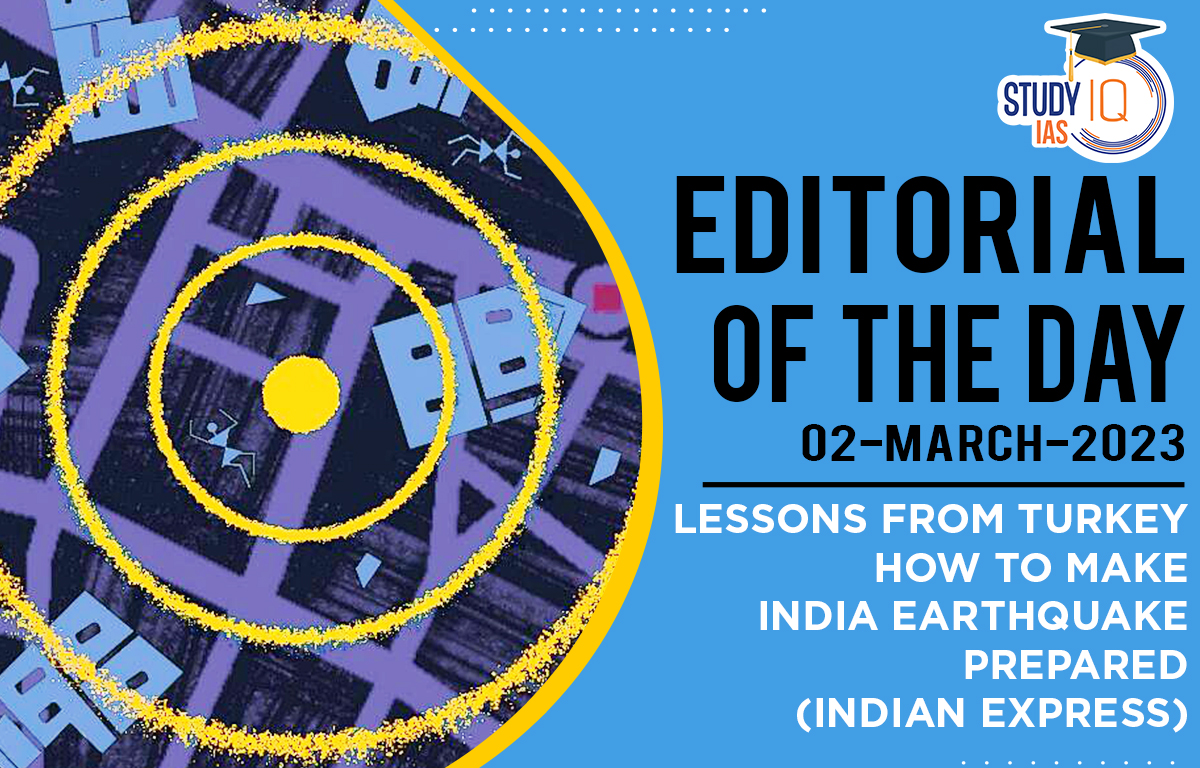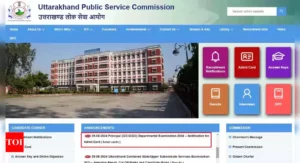Table of Contents
The destruction caused by earthquakes in Turkey should be a warning sign for India. With smaller tremors in Meghalaya and Uttarakhand, geologists have warned of a probable massive earthquake in the Himalayan region.
- In this regard, the observations made by the Delhi High Court must be given serious attention. The court has asked the state government to file a status report and action plan on the structural safety of buildings in Delhi.
- While the demand by the court is valid, we cannot rely on the judiciary to make our cities well-prepared for an earthquake. The government with limited capacity cannot audit the buildings of a city in a matter of weeks.
- Since 58 per cent of the Indian landmass is vulnerable to earthquakes, the questions raised by the court need policy response.
India’s Existing Earthquake Preparedness Policy
- India’s policy primarily operates at the scale of structural details. This includes specifying dimensions of the structural members (columns, beams, etc) and details of the reinforcements that hold these elements together.
- Drawbacks of the Policy:
- It does not consider buildings that were constructed before such codes were published in 1962.
- It over-emphasizes on the processes of enforcement, relying only on penalization and illegalities.
- It treats earthquakes as a problem of individual buildings, which behave in complete isolation from their urban context.
- It fails to understand that buildings exist in clusters and in the event of an earthquake, they collapse on nearby buildings, damaging those that might have otherwise survived and blocking evacuation routes.
Plan of Retrofitting Existing Structures and Enforcing Seismic Codes
- A system of tax-based or development rights-based incentive for retrofitting existing buildings up to seismic codes has to be created.
- It will enable growth of retrofitting industry and will also generate a body of well-trained professionals and competent organizations.
- Better enforcement of seismic codes can be ensured through a similar model. A step in this regard was the National Retrofitting Programme launched in 2014, which denied loans for any building activity that does not meet the standards of earthquake-resistant design.
Initiatives of Japan and San Francisco
Japan
- Skyscrapers have been built with counterweights and other high-tech provisions to reduce the impact of tremors.
- Flexible foundations are used to build small houses and public infrastructure is integrated with automated triggers that cut power, gas, and water lines during earthquakes.
San Francisco (USA)
- San Francisco, which is another world’s famous earthquake-prone cities, was devastated by an earthquake in 1906, witnessing more than 3,000 deaths.
- San Francisco implemented policy changes similar to Japan’s following the disaster. When the next earthquake stuck, the casualties were reduced drastically.
Way forward
- Survey and Audits: Urban policy should start with surveys and audits that can generate earthquake vulnerability maps, showing part of city that is prone to serious damage.
- It should use four criteria: the percentage of vulnerable structures in the area; the availability of evacuation routes and distances to the nearest open ground; density of population; and location of nearest relief services and time within which it can reach.
- This map can be used for providing enforcement, incentives, and response centres across the urban terrain.
Conclusion
- An earthquake preparedness policy will require a visionary, radical and transformative approach. The exiting urban centres will have areas that will be beyond repair, which cannot be demolished either.
- People have been denial of such threats and, hence we lack political will to execute such transformations. Earthquake is not considered fatal until it occurs.
- The ongoing Urban 20 meetings are an excellent opportunity for exchanging international knowledge on earthquake preparedness.
- Earthquake preparedness policy in urban renewal programmes must be made part of Smart Cities Mission. It would be unwise to wait for another earthquake to learn preparedness.


 UKPSC Lower PCS Recruitment 2024: Exam D...
UKPSC Lower PCS Recruitment 2024: Exam D...
 India’s First Full-Stack Quantum Compu...
India’s First Full-Stack Quantum Compu...
 World Liver Day 2025, Theme, History, Ce...
World Liver Day 2025, Theme, History, Ce...





















